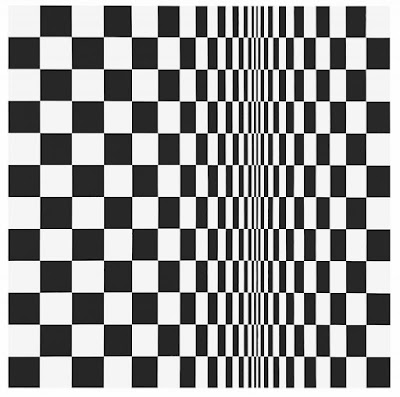Repetition Research - Dayana Menocal
Bridget Riley
Bridget Riley was born on April 24,1931, In London. Her Father and grandfather were both printmakers, so art was always a part of her life. She Studied at Cheltenham Ladies' College and later art at Goldsmiths College and the Royal College of Art in London. She worked as an art teacher where she began to explore shapes, lines, and light. Her work shows repetition by her arrangement of repeating lines, shapes, and colors that appear to move, vibrate, or pulsate when viewed by a person. Each element gains meaning and impact through its relationship with its counterparts, offering the viewer an evolving experience that changes with each time you look at it.
M.C Escher
M.C Escher was born on June 17, 1898 in Leeuwarden, Netherlands. From 19191 to 1922 Escher studied at the School for Architecture and decorative arts in Haarlem, Netherlands. He was the youngest of five boys and was raised by his father. Over his life, Escher experimented with mathematical techniques in his drawings and prints. He formulated the idea of "regular division of the plane" in which repeated shapes and patterns are used to cover the entire surface of that paper, leaving no negative space.
Frank Stella
Frank Stella was born May 1, 1936, in Malden Massachusetts. He studied painting at the Phillips Academy in Andover, Massachusetts, and history at Princeton University. He originally started by working with an abstract expression which later developed into a series of innovative paintings made by an austere and monumental simplicity design. Frank Stella's method of working systematically in a series emphasized his problem-solving approach to painting. He arranged flat color fields into repetitive, geometric patterns and created all-over, non-illusion surfaces.
Bridget Riley Artwork
This artwork by bridget riley shows repetition because she using the same shape over and over again and makes the shapes wavy. She makes the shapes wavy so that they appear as if they are miving in a persons eye but in reality it isn't moving at all.
MC Escher
This Artwork shows repetition because he uses parens and transformations to create endless repetition. by using the same shape and changing color and position it create a repetition that draws a person attention.
Frank Stella Artwork
This artwork shows repetition because he uses the same shapes and pattern over and over again. By changing the color and position of the shape it creates contrast which draws people attention.
This artwork shows repetition because we see the same pattern being repeated all over the square and cutting it into 4 triangle. By changing the color of each line in the triangle its creates depth and illusion to the artwork making it stand out.











Comments
Post a Comment